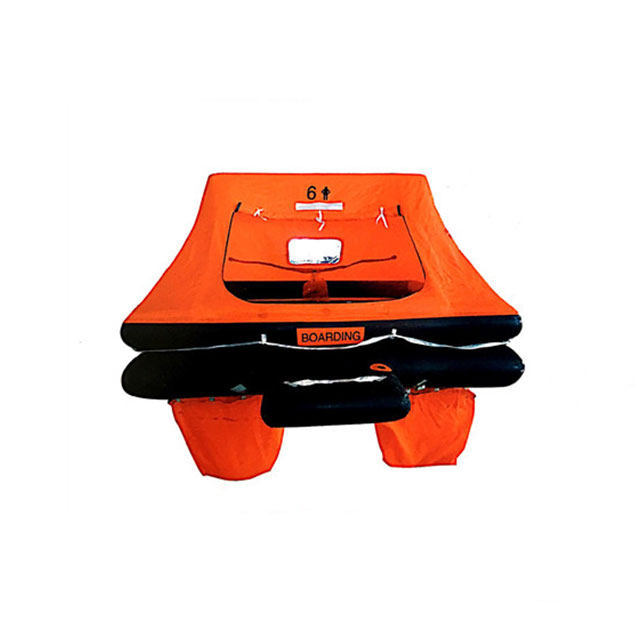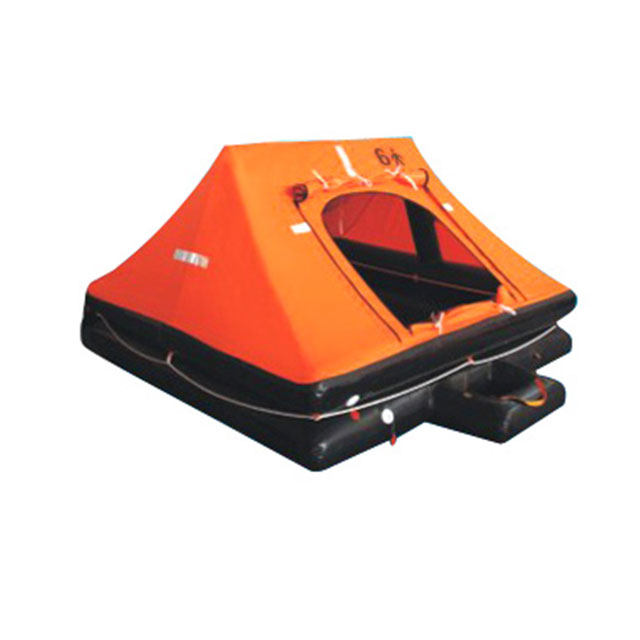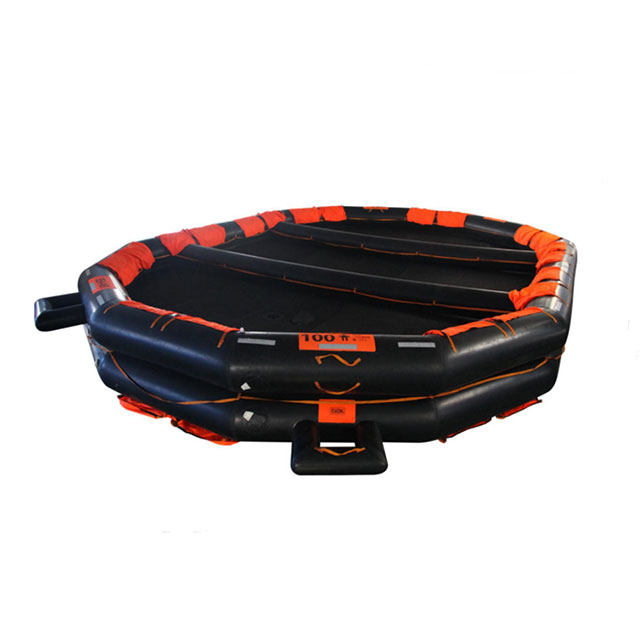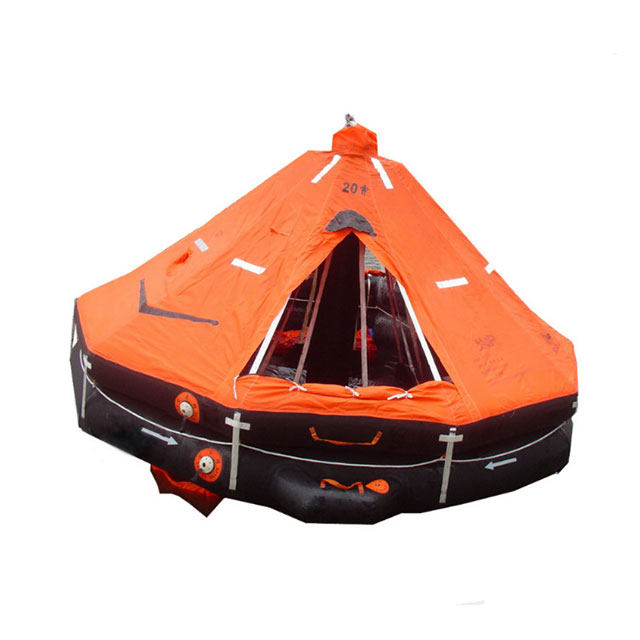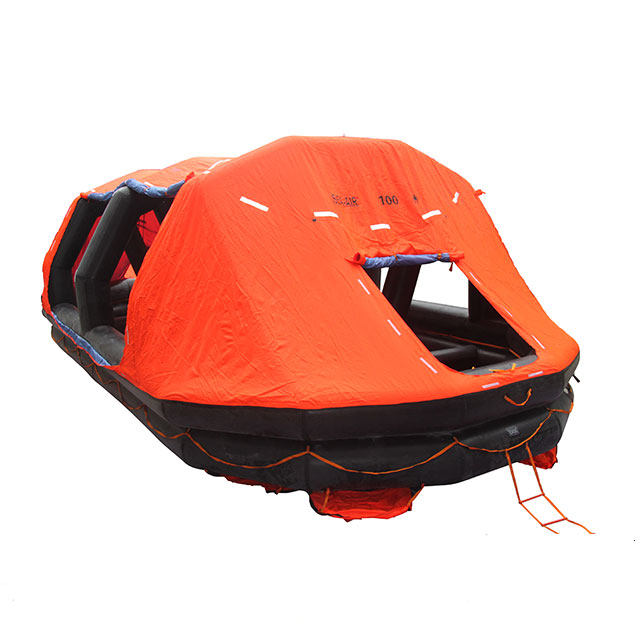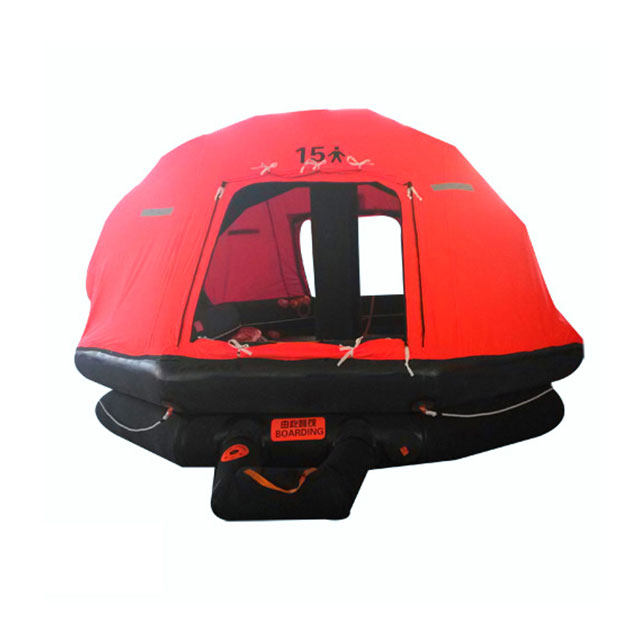SOLAS vs. Non-SOLAS Life Rafts: Choose the Right Type for Marine Safety
Life rafts are a vital safety equipment aboard vessels, specifically designed to offer buoyancy and safety in extreme situations on the sea. But, not all life rafts are the same. Two main categories exist within the maritime industry: SOLAS-approved rafts and non-SOLAS life rafts. Knowing the differences among SOLAS and Non-SOLAS life rafts is essential to ensure safety, compliance, and the appropriateness for specific marine operations.
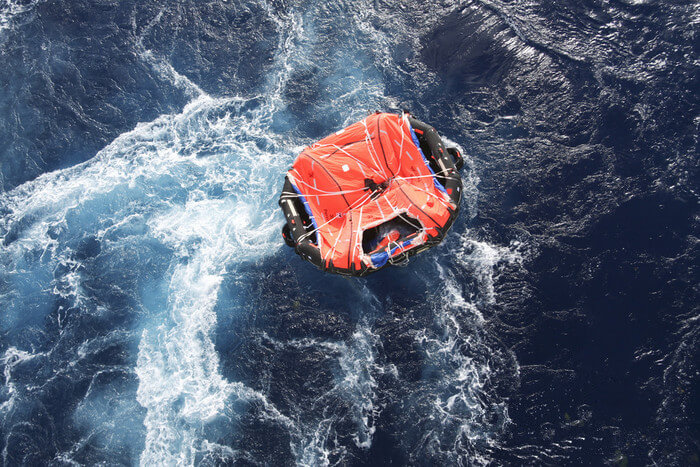
Table of Contents
What are SOLAS Life Rafts
SOLAS life rafts are inflatable emergency vessels which comply to the International Convention for the Safety of Life at Sea (SOLAS). They are specifically designed to offer the maximum level of security, survival support and protection to crew and passengers during incidents on the water. SOLAS life rafts have been subjected to rigorous tests to make sure they are able to withstand the severe conditions at sea as well as extreme temperatures and long periods of open water.
Key Features
- Certification and Compliance: Fully certified in accordance with SOLAS rules.
- Automatic Inflation: Equipped to have automatic inflation mechanisms that activate when in the contact of water.
- Durable Construction: Made from high-strength, fire-resistant material to ensure stability and durability.
- Safety Equipment Included: Typically comes equipped with kits for first-aid including water and food and rations, thermal protection equipment, devices for signaling and paddles.
- High Capacity: Available in a variety of sizes that can accommodate different amounts of passengers. From small vessels for crews to larger passenger vessels.

Advantages
- Certification and Compliance: Regulations meets international standards for maritime safety, required for passenger and commercial vessels.
- Improved Safety: Tested for rough seas as well as cold water immersion in addition to fire resistant, giving an extremely high level of survivability.
- Comprehensive Survival Support: Contains essential emergency supplies that increase chances of survival in extended emergency situations.
- Rapid Deployment: Automated inflation guarantees immediate use without the need for manual configuration.
- Reliability: Engineered to last and performance under extreme conditions.
Limitations
- High Cost: Higher cost than recreational life rafts because of the advanced materials and the included equipment.
- Bulk and Weight: More weight and bigger and heavier, which means that it will require more storage space.
- Maintenance Requirements: Regular inspections and service are required to maintain the certification.
- Complexity: Certain advanced models could require training for crews to be able to function effectively in emergency situations.
Common Applications
- Commercial Shipping: Cargo vessels tanks, container vessels, and tankers vessels.
- Passenger Vessels: Ferries cruise ships, as well as large passenger vessels.
- Offshore Operations: Oil rigs service vessels and support boats that operate in hazardous or remote waters.
- Highly-Risk Marine Transport: Marine vessels transporting hazardous cargo, for which the survival equipment is crucial.
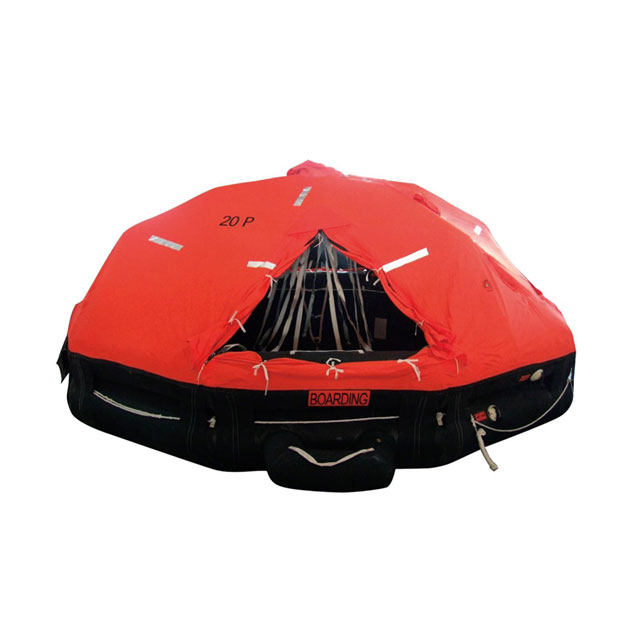
What are Non-SOLAS Life Rafts
Non-SOLAS life rafts can also be described as inflatable rescue vessels that aren’t in conformity with the strict SOLAS guidelines. They are made for recreational, private vessels or leisure boats that provide basic flotation and emergency assistance in the event of sea-related accidents. Although they provide security in emergencies but they usually do not include complete survival equipment, and are not suited to be used for shipping commercially.
Key Features
- Basic Safety Design: Offers vital buoyancy and shelter for the occupants of a restricted number.
- Manual or Semi-Automatic Inflation: The majority of non-SOLAS rafts need manual inflation. However, certain models have semi-automatic systems.
- Compact and Lightweight: It is easier to transport and store than rafts that have been certified by SOLAS.
- Limited Survival Equipment: It may include paddles as well as a small emergency kit and occasionally an unassuming signaling device however, it is not a complete set of provisions.
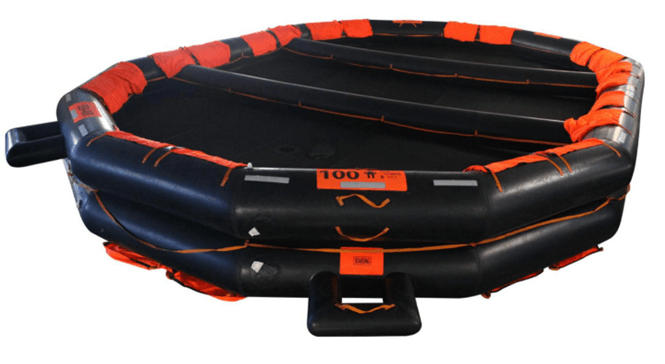
Advantages
- Cost-Effective: Less costly as SOLAS life rafts. This makes them affordable to private boat owners.
- Compact and Lightweight: Simple to handle, store and move in smaller vessel.
- Ideal for Leisure Boating: Suitable for leisure and private boats where SOLAS compliance is not required.
- Flexible Options: The range of options is available in a variety in sizes, configurations and styles designed for families or small teams. use.
Limitations
- No Regulation Certification: Not affixed for passenger or commercial vessels in accordance with International maritime law.
- Limitation on Survival Equipment: less likely to provide occupants with enough food and water for prolonged emergencies in extreme conditions.
- Reduced Durability: Might not be as efficient in extreme weather conditions, high seas, or in long-duration emergency situations.
- Manual Deployment: requires human intervention to pump and deploy, which could delay the emergency response.
Common Applications
- Private Sailboats and Yachts: For pleasure cruising and boating for recreation.
- Fishing Boats: Small-scale personal or commercial fishing activities.
- Charter and Touring Boats: Small vessels operating in close-shore or in low-risk zones.
- Emergency Backup for Larger Ships: Sometime, it is used as an extra safety equipment however, it is not the primary life-saving device.

Key Differences Between SOLAS and Non-SOLAS Life Rafts
| Aspect | SOLAS Life Rafts | Non-SOLAS Life Rafts |
| Certification | Accredited in accordance with SOLAS regulations; compulsory for passenger and commercial vessels. | Not certified by SOLAS; intended for personal use or recreation. |
| Intended Use | Commercial vessels, passenger vessels, offshore operations | Private boats, yachts fishing boats, and small recreational vessels |
| Deployment | Inflates automatically upon contact with water Some models come with manual backup | Most of the time, it is semi-automatic or manual inflation |
| Durability and Design | Materials with high-strength and fire-resistant properties Tested for extreme conditions | Basic construction; minimal protection against rough seas or extreme weather |
| Survival Equipment | Kits for first aid, water and water food rations, thermal aids signals devices and paddles | The bare minimum equipment is paddles and a basic kit for emergencies, periodic signaling devices |
| Capacity | Different sizes for crews and passengers that are clearly classified | Smaller capacity, ideal for small occupants |
| Cost | Costs for maintenance and purchase are higher because of the latest security features | Less expensive and easier to maintain |
| Regulatory Requirement | International maritime law requires it for passenger and commercial vessels | Not necessary; an option for private or recreational vessels |
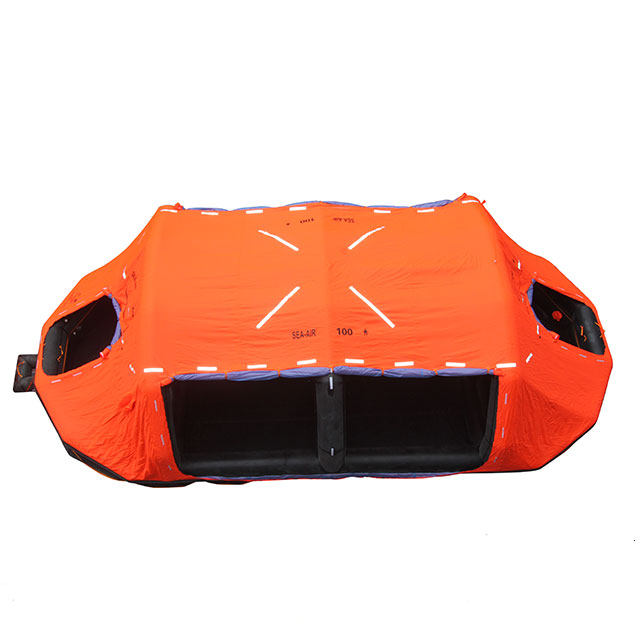
Key Considerations for Choosing Between SOLAS and Non-SOLAS Life Rafts
1. Regulatory Compliance and Vessel Type
One of the main elements in choosing the right inflatable life raft is its compliance with the maritime rules. SOLAS liferafts are essential for passenger vessels, commercial vessels, ships, and offshore activities. They are compliant with standards of International Convention for the Safety of Life at Sea (SOLAS) standards, which ensures strict testing of endurance and stability and survival capabilities. Non-SOLAS life rafts however, are designed for private or recreational vessels and aren’t certified by international standards. Commercial vessel owners have to prioritize SOLAS certification, whereas private boat owners may be able to look at alternatives to SOLAS if legal requirements permit.
2. Operational Environment and Risk Level
The climate within which the vessel operates has a significant impact on determining the kind of life raft required. SOLAS Life rafts have been made to withstand harsh conditions at sea, freezing frigid water, and lengthy periods of time at sea. They are equipped with comprehensive survival gear including thermal protection aids food and water items as well as first aid kits and devices for signaling. Non-SOLAS rafts offer vital shelter and flotation they offer only a limited level of protection in extreme conditions. They generally come with only a few survival equipment. For high-risk or offshore operations, SOLAS life rafts provide greater safety however non-SOLAS rafts might suffice for calm nearshore waters.
3. Deployment Mechanism and Ease of Use
Efficiency of deployment is vital during times of crisis. SOLAS life rafts typically have automated inflation that is triggered through water immersion, ensuring an immediate and secure deployment. Non-SOLAS life rafts usually depend on semi-automatic or manual inflation, which can slow readiness when in crucial circumstance. The operators of vessels must consider the the size of their crew, response time and the possibility of scenarios with high stress when considering the options for deployment.
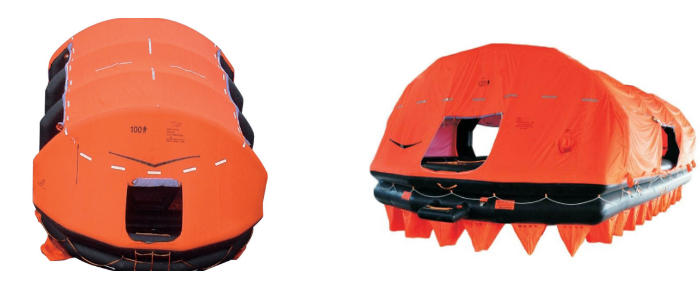
4. Cost and Storage Considerations
Cost is yet another aspect that influences the selection of a life rafts. SOLAS-certified rafts are generally more costly due to their sturdy construction, advanced safety features, as well as the included safety equipment for survival. They also tend to be larger and heavier, which requires greater storage space and frequent maintenance. Life rafts that are not SOLAS-compliant are typically less expensive, compact and more convenient to store, which makes them ideal for private or recreational vessels. Owners must consider the cost of purchase and space, as well as the degree of safety needed.
5. Crew Training and Familiarity
Whatever the nature, the efficiency of a life-raft relies on the correct training and knowledge. SOLAS life rafts due to complex system and equipment for survival might require additional training for crew members to ensure the proper use. Non-SOLAS life rafts are less complicated and, in many cases, easier for users who are recreational to use however, being familiar with the procedures for inflation and boarding is vital.
Summary
- SOLAS Life rafts have become essential for passenger and commercial vessels with their rigorous safety features automated deployment and complete survival kits.
- Non-SOLAS life rafts, although appropriate for recreational and private vessels, are cost-effective and compact, but offer limited protection in extreme conditions.
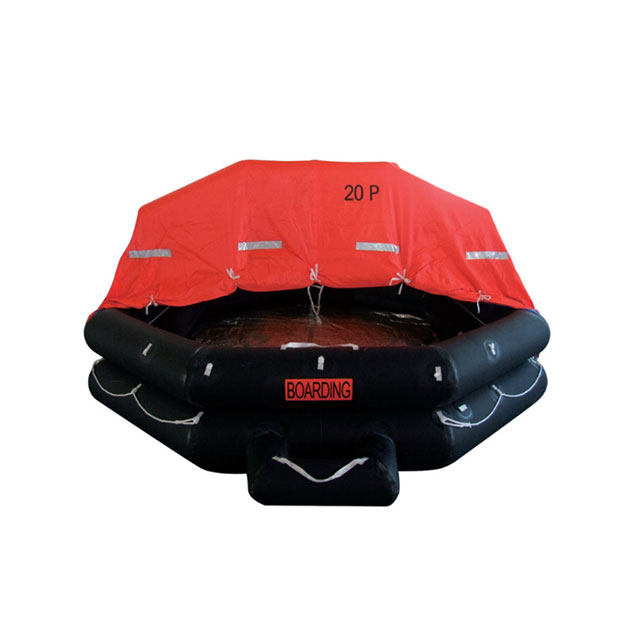
Final Thoughts
The decision between SOLAS and non-SOLAS life rafts is contingent on the compliance of regulatory compliance, vessel type, operational requirements, etc. Choosing the appropriate type of life raft onboard isn’t just an issue of regulation, but is an essential element in ensuring the safety at sea.



